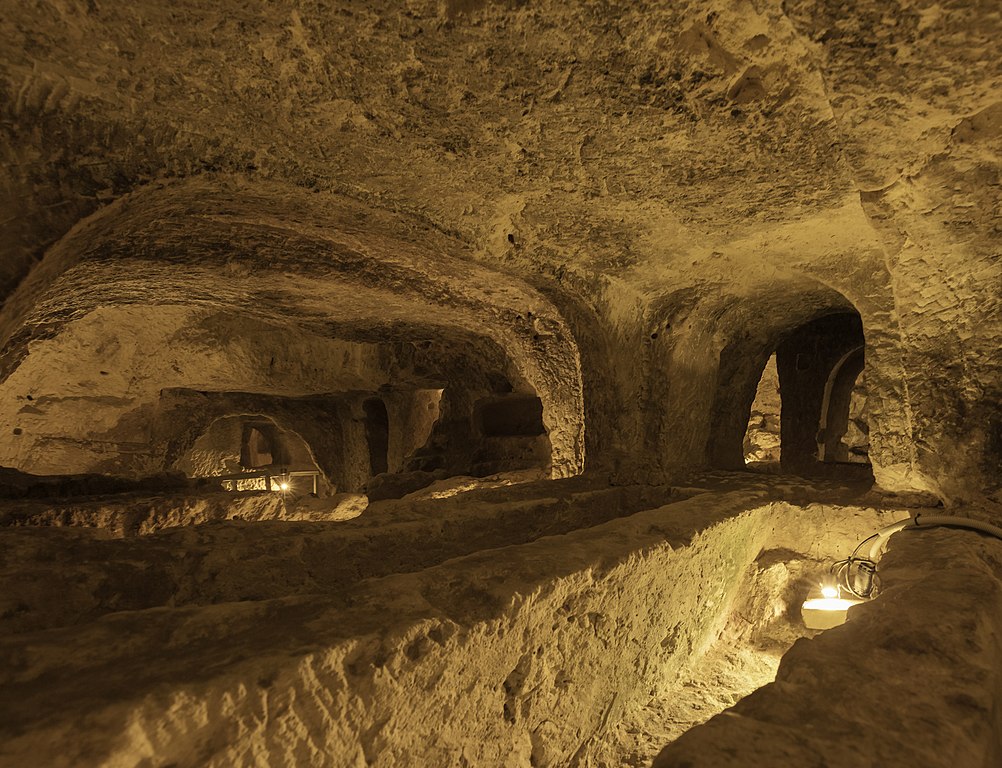Catacombs of St. Paul
Church and Historic Site in Rabat

The Catacombs of St. Paul in Rabat are among Malta's most fascinating archaeological and cultural sites, offering visitors a journey deep into the island's early Christian heritage. Dating back to the 3rd century A.D., these vast underground burial chambers provide invaluable insight into the funerary traditions, artistry, and beliefs of Malta's ancient inhabitants. Although not located within Mdina's walls, the catacombs lie just beyond them in Rabat — historically part of the same settlement — and serve as a window into the past for anyone intrigued by early Christianity and subterranean architecture.
A Network of Ancient Burial Chambers
The Catacombs of St. Paul comprise an extensive labyrinth of underground galleries, tombs, and passages stretching over four kilometers. This intricate complex was once a communal burial site, used during a time when open-air interment was forbidden within city limits due to hygiene laws. Visitors today can explore around 30 hypogea, divided into two main sections, each containing a series of rock-cut tombs and intricate chambers carved from limestone. These spaces were not only used for burial but also for rituals and gatherings, reflecting the early Christian community's devotion to remembrance and faith.
History, Legend, and Faith
While the catacombs hold immense archaeological value, they are also steeped in legend and religious lore. According to tradition, Saint Paul the Apostle is believed to have sought refuge in these underground chambers following his shipwreck on Malta around 60 A.D. Though the legend is not historically verified, it has become an integral part of the site's cultural and spiritual identity. The association with Saint Paul imbues the catacombs with an aura of sanctity, attracting not only historians and archaeologists but also pilgrims and those drawn to the island's Christian heritage.
Artistry and Preservation Underground
What makes the Catacombs of St. Paul particularly remarkable is the exceptional preservation of the tombs, frescoes, and carvings found within. The walls still bear faint traces of early Christian symbols, decorative motifs, and Latin inscriptions that offer clues to the faith and artistry of Malta's early inhabitants. The catacombs' architecture reveals the craftsmanship of a society that valued both functionality and reverence for the deceased. Visitors walking through these ancient corridors can almost feel the presence of history — a blend of solemnity, spirituality, and quiet awe.
A Historical Context Beyond the City Walls
The catacombs' location on the outskirts of Rabat holds special historical significance. In antiquity, burial sites were placed outside city centers to prevent the spread of disease, a practice that highlights the advanced social and public health norms of the era. Over time, this placement also created a natural boundary between the living city and the realm of the departed. Today, standing at this threshold between Rabat and the ancient necropolis offers a powerful reminder of the continuity between past and present — a connection that defines much of Malta's enduring heritage.
The Catacombs of St. Paul appears in our Complete Guide to Visiting Rabat!
This website uses affiliate links which may earn a commission at no additional cost to you!
Visiting Catacombs of St. Paul
Nearby Attractions
- Wignacourt Museum (0.2) km
Museum in Rabat - Basilica of Saint Paul, Rabat (0.2) km
Basilica in Rabat - Cosmana Navarra House (0.2) km
Historic Building in Rabat - St. Dominic's Convent (0.5) km
Priory in Rabat - Domus Romana, Rabat (0.6) km
Roman Site in Mdina - Howard Gardens, Mdina (0.6) km
Gardens in Mdina - Mdina Ditch Gardens (0.6) km
Gardens in Mdina - Walls of Mdina (0.6) km
City Walls in Mdina - Greeks Gate, Mdina (0.7) km
City Gate in Mdina - Main Gate of Mdina (0.7) km
City Gate in Mdina


